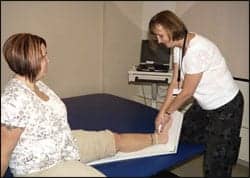According to a new review published in the Journal of the American Academy of Orthopaedic Surgeons, many of the risks that frequently cause falls are not adequately addressed with the fall prevention initiatives used in health care facilities.
In hospitals, approximately 3-20% of inpatients fall at least once during their stay. These falls are considered "preventable" by the Centers for Medicare & Medicaid, and therefore health care facilities are held accountable for the costs of treating any resulting injuries. However, in this literature review, the authors found that hospitals may not be able to prevent most falls, as many risk factors are not under the caregivers’ direct control.
One study found that comprehensive fall prevention programs, including patient education, vision assessments, and walking aids did not reduce the incidence of falls for patients undergoing a typical inpatient hospital stay (median of 7 days). Such strategies are more effective in long-term care (i.e., 20 or 30 days) or carefully managed home care settings.
Another study indicates that there is a strong correlation between falling and delirium that supports the need for early identification and management of delirium in the hospital. This suggests that patients receiving intervention including pre- and postoperative assessments and management of postoperative complications for delirium are less likely to receive fewer serious injurious falls.
"Of course, hospitals should educate patients and the families, use bed rails, keep beds low, keep floors dry and clear of clutter—all the common sense things that can reduce the risk of falls," said Terry A. Clyburn, MD, orthopaedic surgeon, University of Texas Medical School at Houston, co-author of the literature review. "But we found no proof that falls in hospital are, in fact, preventable."
[Source: Medical News Today]




